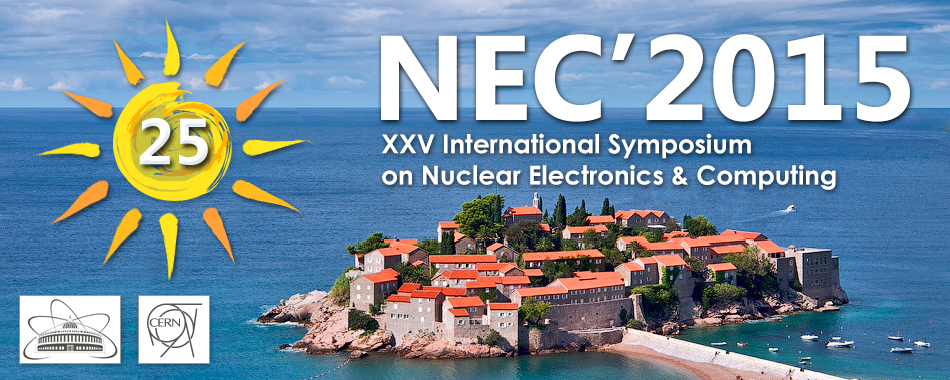Speakers
Dr
Alexei Klimentov
(Brookhaven National Lab)Mr
Dimitrii Krasnopevtsev
(National Research Nuclear University MEPhI (RU))
Description
After the early success in discovering a new particle consistent with the long awaited Higgs boson, Large Hadron Collider experiments are ready for the precision measurements and further discoveries that will be made possible by much higher LHC collision rates from spring 2015. A proper understanding of the detectors performance at highoccupancy conditions is important for many on-going physics analyses. The ATLAS Transition Radiation Tracker (TRT) in one of these detectors. TRT is a large straw tube tracking system that is the outermost of the three subsystems of the ATLAS Inner Detector (ID). TRT contributes significantly to the resolution for high-pT tracks in the ID providing excellent particle identification capabilities and electron-pion separation. ATLAS experiment is using Worldwide LHC Computing Grid. WLCG is a global collaboration of computer centers and provides seamless access to computing resources which include data storage capacity, processing power, sensors, visualization tools and more. WLCG resources are fully utilized and it is important to integrate opportunistic computing resources such as supercomputers, commercial and academic clouds no to curtail the range and precision of physics studies. One of the most important study dedicated to be solved on a supercomputer is reconstruction of proton-proton events with large number of interactions in Transition Radiation Tracker. This studies are made for ATLAS TRT SW group. It becomes clear that high-performance computing contributions become important and valuable. An example of very successful approach is Kurchatov Institute’s Data Processing Center including Tier-1 grid site and supercomputer. TRT jobs have been submitted using the same PanDA portal and it was transparent for physicists. Results have been transferred to the ATLAS Grid site. The presented talk includes TRT performance results obtained with the usage of the ATLAS GRID and "Kurchatov" supercomputer as well as analysis of CPU efficiency during these studies.
Primary author
Mr
Dimitrii Krasnopevtsev
(National Research Nuclear University MEPhI (RU))
Co-authors
Dr
Alexei Klimentov
(Brookhaven National Lab)
Evgeny Ryabinkin
(NRC Kurchatov Institute)
Mr
Ruslan Mashinistov
(NRC Kurchatov Institute)

